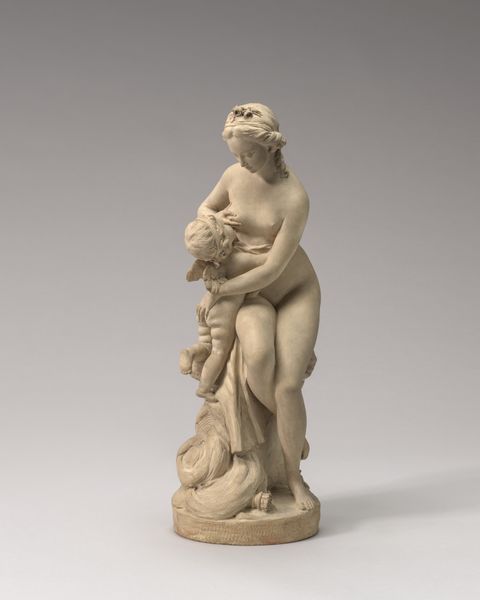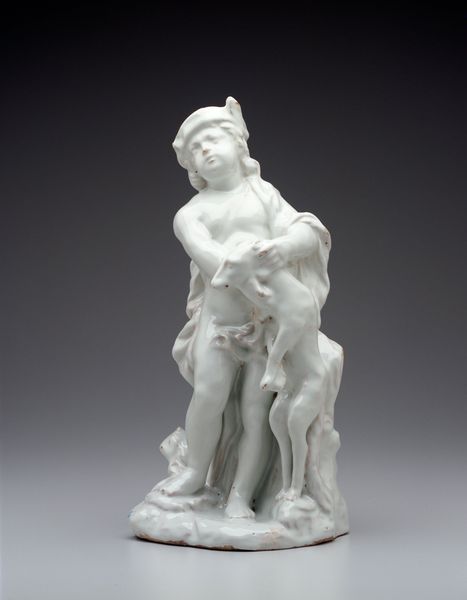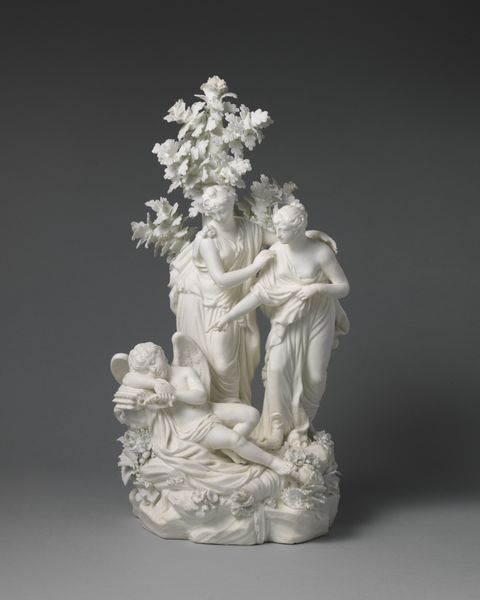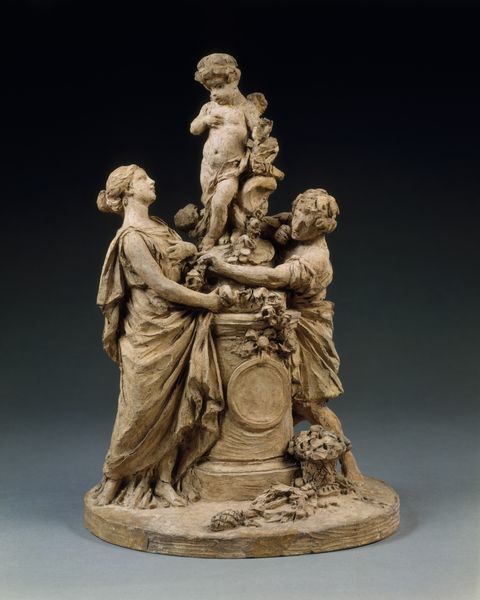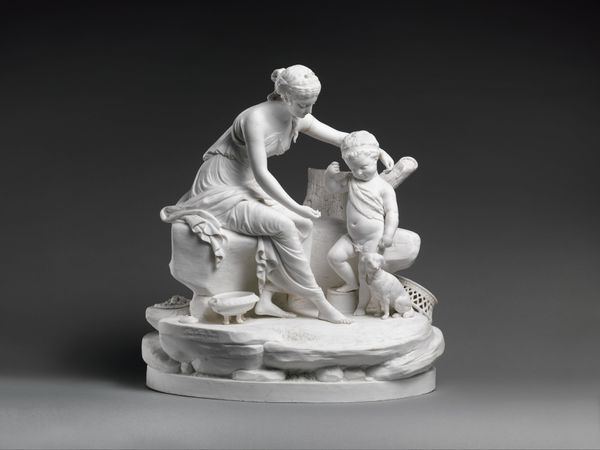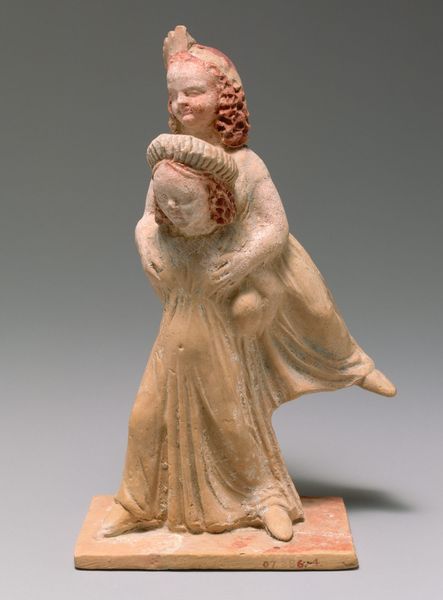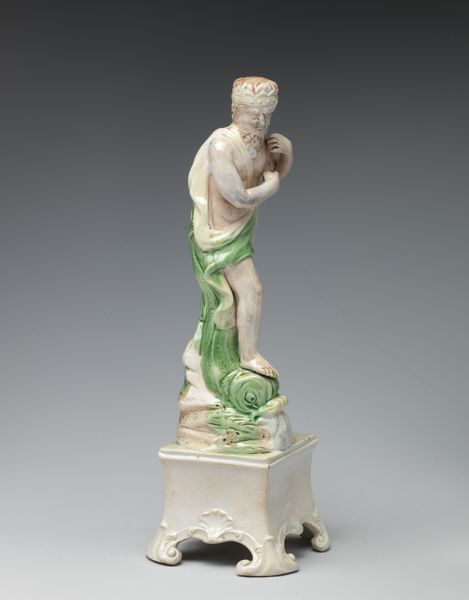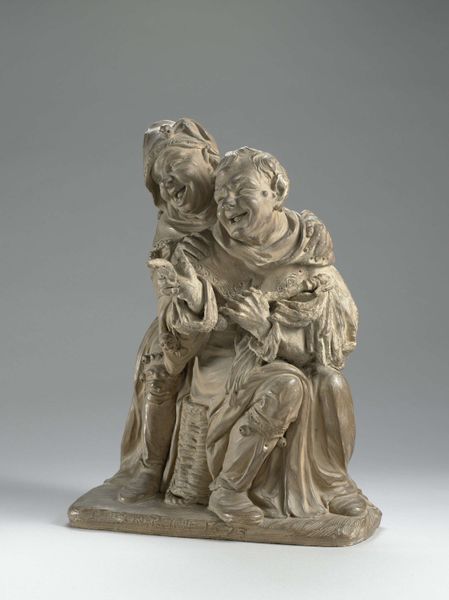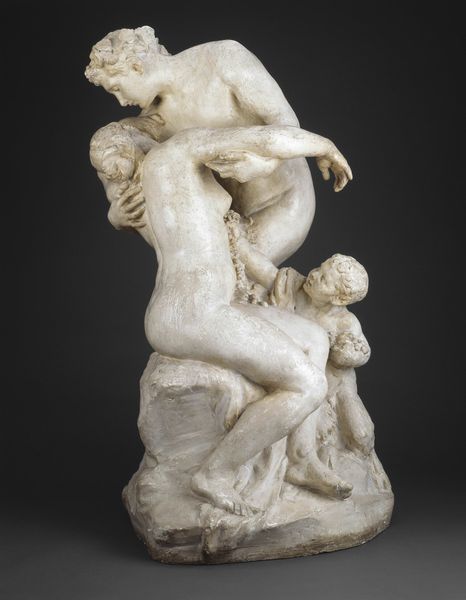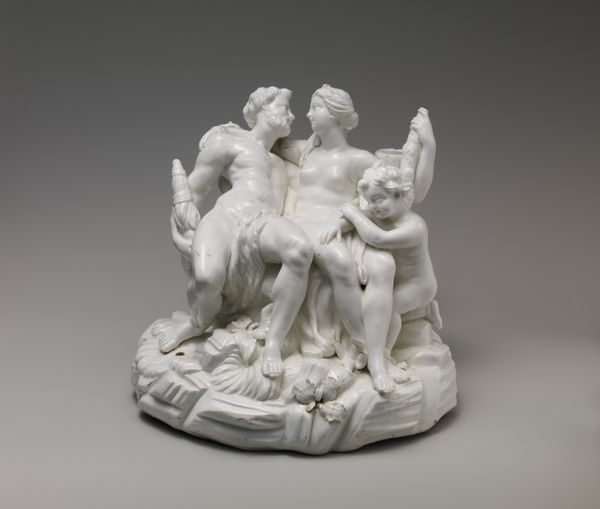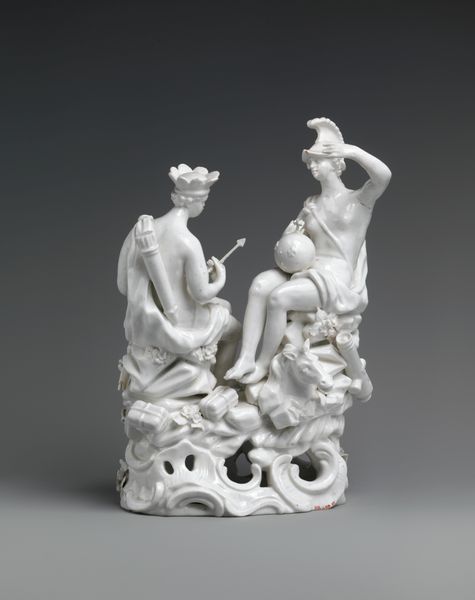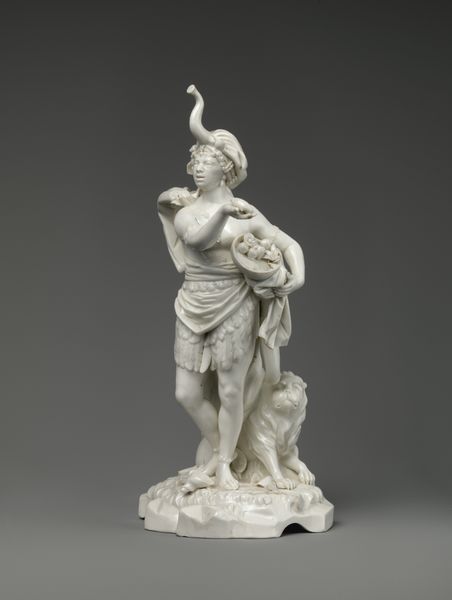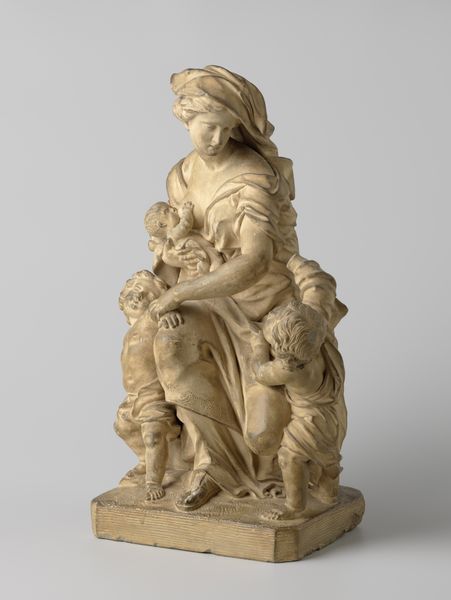
ceramic, porcelain, sculpture
#
sculpture
#
ceramic
#
porcelain
#
figuration
#
child
#
sculpture
#
men
#
genre-painting
#
decorative-art
#
miniature
#
rococo
Dimensions: Overall (confirmed): 14 5/16 × 8 3/16 × 6 3/8 in. (36.4 × 20.8 × 16.2 cm)
Copyright: Public Domain
Curator: Oh, this little tableau—"Harlequin Family"—is an exercise in pure whimsy. Crafted between 1735 and 1750, we see the ceramic medium, porcelain specifically, used to evoke something light, airy, and even a bit silly. Editor: My first impression is a sense of unsettling domesticity. The Harlequin figure—traditionally a symbol of subversion and wit—is now tamed, incorporated into this saccharine family unit. There's something almost oppressive about the uniformity. Curator: I see your point. He has, shall we say, been thoroughly domesticated! But isn't that precisely the tension Villeroy is exploring? The unruly spirit brought to heel, confined within the most rigid of social structures, the family. And executed in such delicate material! It's like encasing a wild bird in sugar. Editor: Sugar, yes! Rococo excess reflecting anxieties about the changing social order. Harlequin, stripped of his power to critique. Here, it looks less a celebration of familial joy and more a cautionary tale of assimilation and class. Think about what it meant to see one of those characters rendered, nearly immobile, into such fine and brittle porcelain. Who did he become? Who did he now represent? Curator: Well, that’s where I differ. I see humor, albeit perhaps a touch dark, a playful poke at the conventions of the time. Notice how even rendered as a family man, the Harlequin still holds himself with a bit of a defiant tilt. Villeroy’s intention isn't necessarily sinister but possibly observant of society. Editor: I find it hard to separate decorative art from its socio-political function. Objects like these served as powerful markers of status and ideology. These were more than just frivolous fancies, and served more purpose to its commissioners than a humorous commentary. It is an emblem of assimilation in pursuit of prestige and stability, I fear. Curator: Prestige yes, but aren’t all beautiful things created to provide prestige in some manner? That's its own little tragedy. Perhaps there's beauty and joy even within societal constraints, a tiny space for freedom expressed through artistry, in the turn of a figure, a glance. Editor: A tiny space perhaps, but it can also speak volumes about larger power dynamics. It reminds us to critically assess these seemingly innocuous domestic scenes within their original context. Curator: So true; isn't art marvelous that way? Trapping, holding…liberating all in equal measure, if we're ready to read. Editor: Yes, to interrogate the narratives they were built upon.
Comments
No comments
Be the first to comment and join the conversation on the ultimate creative platform.
